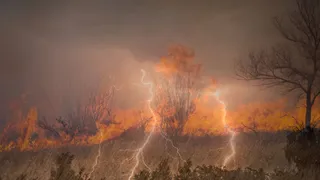
Willis highlights ‘New era of climate extremes’ as natural catastrophe losses stay elevated
Natural catastrophes continue to put a strain on global insurance markets, according to the latest Natural Catastrophe Review published by Willis.
Worldwide, insured losses from natural catastrophes now consistently exceed $100 billion per year. It’s been six years since the insurance industry last experienced a year with low losses from natural catastrophes. Events so far in 2025 indicate that losses exceeding $100 billion will very likely continue for at least another year.
The Willis Natural Catastrophe Review is a biannual publication that provides insights into recent natural catastrophes and shares expert views on the risks posed by major perils. It sets out the causes and effects of major catastrophes in 2025 to date and goes beyond the headlines to identify the underlying factors that made them possible. The Review also provides an expert outlook for the rest of the year and into 2026, exploring potential threats from hurricanes, drought, flood and other hazards.
Other key trends include:
Exceptional natural catastrophes: So far, major events in 2025 include the Los Angeles wildfires (globally, the worst wildfire event ever with respect to insured losses), the worst wildfires in Japan and South Korea in at least a generation, the third-most active year on record for tornadoes in the United States, the first landfalling cyclone near Brisbane, Australia in 50 years, and the highest wind speed ever recorded over Ireland.
Natural catastrophes under climate change: The severity and scale of recent catastrophes underlines the need to confront a new era of climate extremes. Risk managers must reassess the risk, integrate climate forecasts into their plans, and ensure insurance and risk frameworks are optimized for today’s evolving threats. Data-driven strategies are needed to narrow protection gaps and to stay resilient in a rapidly changing world.
Leveraging scientific advances to mitigate future risks: The Review presents a forward view on natural catastrophe risk for the remainder of 2025 and early 2026. It also provides concrete advice on how to make the most of seasonal weather forecasts and identifies geographic regions that may be exposed to elevated catastrophe risk during the next three to six months.
Peter Carter, head of climate practice, Willis, said: “2024 continued a 6-year streak of natural catastrophe losses in excess of $100 billion. The wildfires in Los Angeles early in 2025 will drive estimated losses of $40 billion alone so the streak looks set to continue. With global efforts likely failing to keep the temperature below 2°C above pre-industrial levels, our focus must now turn to adapting and building resilience in the face of this new reality.”
Cameron Rye, director, natural catastrophe analytics, Willis said: “The Los Angeles wildfires of January 2025 resulted in insured losses more than $40 billion, equivalent to nearly one-third of global insured losses the previous year. The scale and timing of the event placed immediate pressure on insurers’ catastrophe loss budgets at the beginning of the year and prompted a renewed focus on how wildfire risk is modelled, particularly in high-exposure areas like the urban-wildland interface. With an above-average number of storms predicted for the North Atlantic hurricane season, 2025 is shaping up to be one of the costliest years on record for (re)insurers.”
Did you get value from this story? Sign up to our free daily newsletters and get stories like this sent straight to your inbox.

